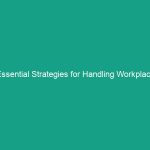Introduction
Good morning team! Today, we’re going to discuss a vital aspect of our Safety protocols: Essential Harnesses Guidelines. This topic is crucial to ensuring not only your Safety but also the safety of your colleagues while working at heights or in challenging environments. Harnesses are life-saving devices, and understanding how to use them properly can make all the difference in preventing accidents and injuries.
By the end of this Toolbox Talk, you’ll have a better understanding of the importance of using harnesses correctly, the risks of neglecting safety protocols, and what you can do to stay safe. So let’s dive in!
Understanding Essential Harnesses Guidelines
Essential Harnesses Guidelines refer to the Best Practices and protocols for using safety harnesses effectively. This includes understanding the different types of harnesses, how to wear them correctly, and the importance of regular inspections. Safety harnesses are designed to prevent falls, which can lead to serious injuries or fatalities.
Many employees might believe that wearing a harness is just a formality or that they can skip it if they feel safe. This misconception can lead to devastating consequences. Each time you work at a height or in a precarious position, the risk of falling is real, and harnesses are your first line of defense.
Key Hazards, Risks, and Safety Considerations
When it comes to working with harnesses, several Hazards and risks can arise:
- Improper Fit: A harness that doesn’t fit correctly can lead to serious injuries in the event of a fall.
- Neglecting Inspections: Failing to inspect your harness before use can result in using worn or damaged equipment.
- Incorrect Usage: Not knowing how to properly connect to lanyards or anchors can lead to catastrophic failures.
- Environmental Factors: Weather conditions or unstable surfaces can increase the risk of accidents.
The consequences of ignoring these safety protocols can be severe. Falls from heights are one of the leading causes of workplace injuries and fatalities. Understanding these risks makes it clear why adhering to safety practices is not just a good idea—it’s essential.
Best Practices, Procedures, & Actionable Advice
Now that we’ve discussed the risks, let’s cover some Best Practices for using harnesses safely:
1. Choose the Right Harness
Different jobs require different types of harnesses. Make sure you select a harness that suits the specific job you’re undertaking. For instance, a full-body harness is preferable for Fall Protection, while a sit harness may be suitable for climbing.
2. Ensure Proper Fit
Always try on your harness and adjust it for a snug fit. The harness should not be too loose or too tight. You should be able to fit two fingers between the harness and your body without it being overly restrictive.
3. Conduct Regular Inspections
Before each use, inspect your harness for any signs of wear, fraying, or damage. This includes checking the webbing, buckles, and D-rings. If you find any issues, do not use the harness and report it to your supervisor.
4. Follow Proper Usage Procedures
Always connect your harness to the appropriate anchor point using a lanyard. Ensure that the lanyard is attached to a secure point and that there is no slack. The connection should be made at the back D-ring for optimal safety.
5. Get Training
Take advantage of any training opportunities offered by your employer. Understanding how to use your harness properly, along with knowing how to respond in case of a fall, is critical.
6. Know Your Environment
Be aware of your working environment. If conditions are windy, wet, or otherwise hazardous, take extra Precautions. Use additional Safety Measures such as guardrails or safety nets where possible.
Case Study: Real-World Incident
Consider the case of a construction worker who fell from a height while working on a roof. The worker was not wearing a harness because he believed he was safe without it. Unfortunately, he sustained severe injuries that could have been prevented had he adhered to the safety protocols of wearing a harness.
Regulations, Standards, and Compliance
Compliance with safety Regulations is not just a requirement; it’s crucial for your protection. Organizations like OSHA (Occupational Safety and Health Administration) provide guidelines and regulations that must be followed when working at heights.
These regulations often include:
- The need for a personal fall arrest system (PFAS) when working at heights above six feet.
- Regular safety training and education regarding the use of harnesses and fall protection equipment.
- Employers must ensure that all harnesses meet safety Standards, such as ANSI (American National Standards Institute) guidelines.
Understanding and adhering to these regulations not only keeps you safe but also protects your employer from legal repercussions and enhances the overall safety culture within the workplace.
Employee Engagement & Discussion
Now that we’ve covered a lot of ground regarding harness safety, I’d like to hear from you. What safety challenges have you encountered related to working at heights? Have you ever experienced a situation where a harness saved you or a colleague? Your experiences are valuable and can help us all learn and improve our safety practices.
Conclusion & Key Takeaways
To wrap up, remember that using harnesses correctly is essential in preventing falls and ensuring your safety at work. Here are the main points we covered:
- Select the right harness for your job.
- Ensure it fits properly.
- Conduct regular inspections.
- Follow proper usage procedures.
- Engage in ongoing training.
- Be aware of your working environment.
Safety is a collective responsibility, and your commitment to following these Essential Harnesses Guidelines is crucial. Thank you all for your attention today, and let’s make safety our top priority!


